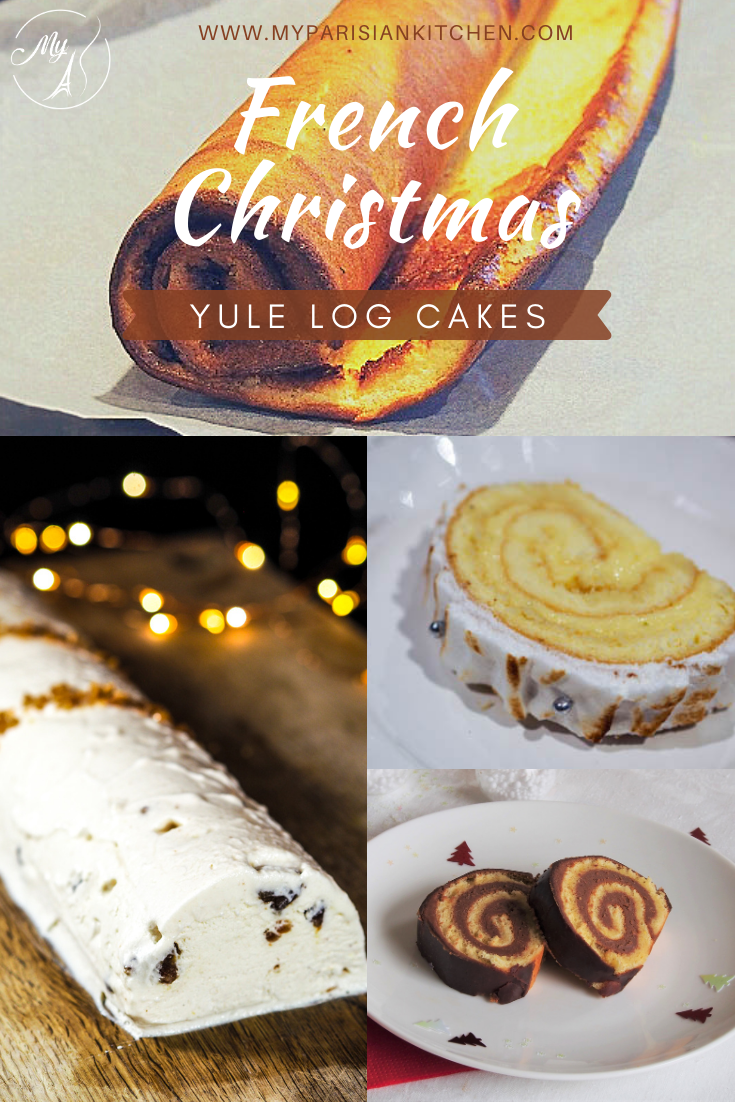Do you know why we serve log-shaped cakes for Christmas? I will tell you where this tradition, widely spread in France, comes from.
Offering a beautiful and tasty “bûche de Noël” as we say in French (lit. Christmas log) yule log cake is a tradition in France, and not only in Christian homes. The history of this custom dates from a very long time ago with pagan rituals. Here is the story.
Originally ritual of wood log burning in the fireplace
Long ago, people used to place a massive log in the fireplace on the occasion of the winter solstice, the longest night of the year. That was a pagan custom existing before Christians started to celebrate Christmas.
The log was blessed to protect the house, and its inhabitants then burned for the occasion of Christmas Eve. The log had to be big enough to burn all night long (and until Epiphany day, 12 days later in some regions!). Choosing the type of wood, the log itself, and who would place it in the fireplace or light was of the most importance.
Likewise, the choice of wood species was rigorous: wood from a fruit tree, a symbol of abundance, or from a robust tree such as oak or beech. Wood had to make good sparks: the higher the sparks were, the better the upcoming year will be.
The lighting of the log, sometimes placed on a bed of moss, blessed by being sprinkled with oil, cooked wine, saltwater, honey, olive oil, or others as an offering was made by the oldest and the youngest of the family, thus symbolizing the transmission. The firing was an occasion for meditation in memory of the elders.
It is even said that ashes had virtues, fertilizing powers, and firebrand was supposed to protect (from thunder, devil …).
Traditions varied from one region to another (and even from one family to another).
Evolution of traditions to edible log
As over centuries lifestyle evolved and big cities appeared, fireplaces became smaller and smaller (and none in some modern homes), stoves allowing modern cooking became a norm. This tradition became quite difficult to respect. Smaller logs replaced former giant logs burnt overnight.
Then logs were placed in the middle of the table instead of in the fireplace. They became the dinner table centerpiece and were sometimes decorated. Some logs were hollowed out and garnished with candy, dried fruit, cookies, gingerbread, and sometimes even small toys.
Finally appeared cakes with the shape of a wood log, even imitating bark.
Who invented the first yule log cake?
As for many pastries, several possible stories last. Even the most renowned French historians believe in different theories. According to them, the inventor of the Yule log could be:
- The Parisian pastry chef Antoine Charadot from rue de Buci in Paris. In 1879 he created a rolled sponge cake filled with buttercream. What is sure is that he invented buttercream.
- A pastry apprentice working at Paris city hall in 1834.
- Another pastry chef from Lyon in the 1860s.
- Or the personal pastry chef of Prince Charles III of Monaco, Pierre Lacam. He was a famous pastry chef of the “Belle Epoque”, in 1898 / 1899. In his book “Mémorial historique et géographique de la pâtisserie” published in 1863 he writes about yule log but as he shares recipes from others and he spent only two years working for the Prince of Monaco, we cannot be sure yule log was his creation.
- There is a recipe for a pastry log coated with ganache and decorated with pink flowers and green leaves in the recipe book of 1903 by a chocolatier-confectioner from Voiron in Isère (French Alps), Félix Bonnat.
- Poitou-Charentes region had a traditional “Christmas roll cake” in the 19th century.
Be that as it may, symbolic cake substituting wood log was quickly a success, and tradition changed from a real wood log to a fake log, our now-classic Yule log pastry.
Since the beginning, Christmas yule logs were made with swiss roll cake (baked in a particular mold before the cake started to be rolled up) and buttercream, already with decorations (holly, leaves, mushrooms….). The first flavors were probably chocolate or mocha.
Voilà, that’s all for the strory behind bûche de Noël. If you are interested in this kind of article, then check here the story behind la galette des rois, Epiphany king cake.

